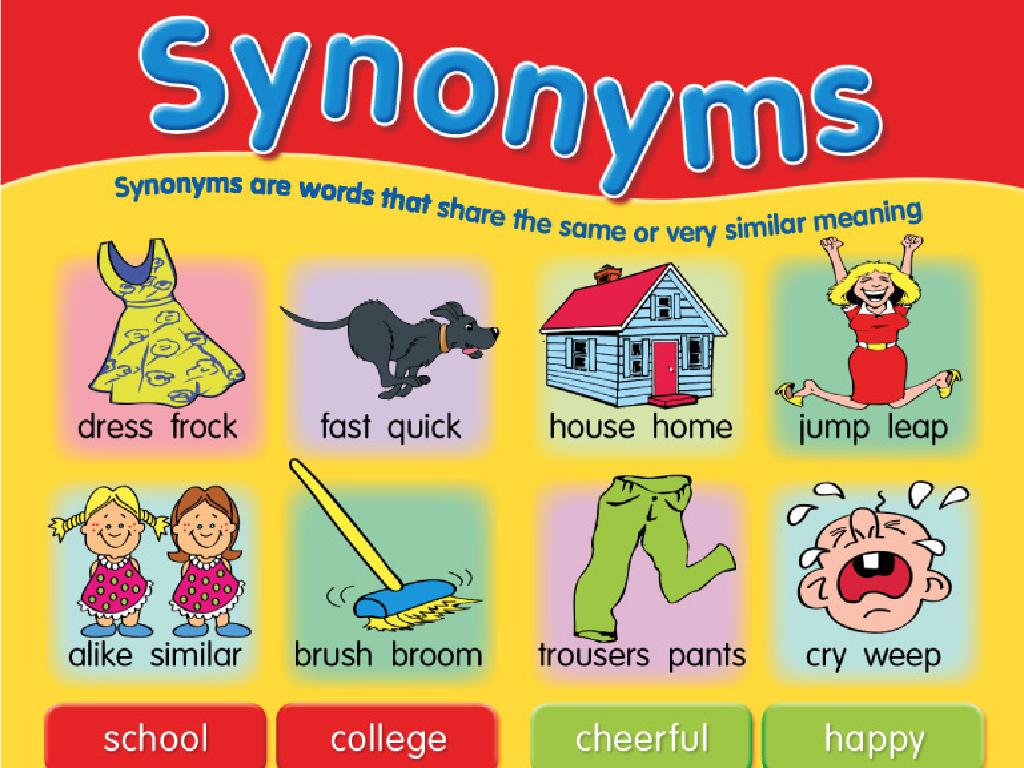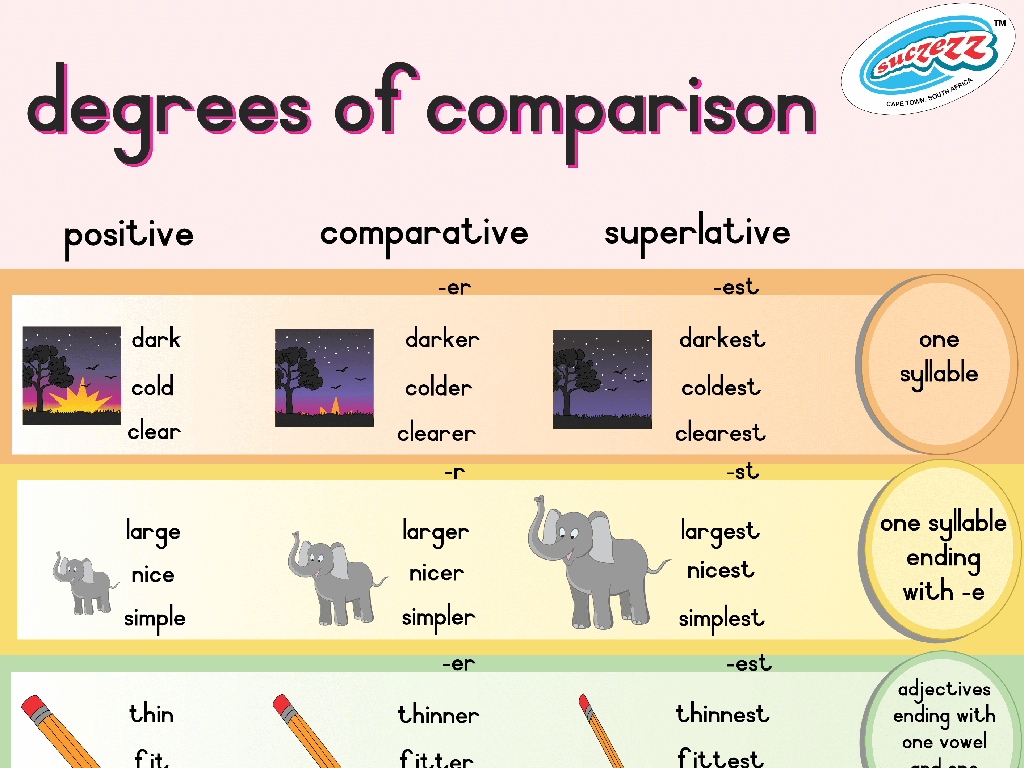The Lincoln Memorial
Subject: Social studies
Grade: Fifth grade
Topic: American Symbols, Landmarks, And Monuments
Please LOG IN to download the presentation. Access is available to registered users only.
View More Content
Exploring American Symbols: The Lincoln Memorial
– What are American symbols?
– Symbols represent our nation’s history and values
– Why are landmarks important?
– Landmarks honor important events and people
– The significance of national monuments
– Monuments remind us of our shared heritage
– Today’s focus: The Lincoln Memorial
|
This slide introduces the concept of American symbols, landmarks, and monuments to the students, setting the stage for a deeper dive into the Lincoln Memorial. Begin by discussing what symbols are and how they represent the United States’ history, culture, and values. Explain the importance of landmarks in commemorating significant events and individuals in our nation’s past. Emphasize the role of national monuments in reminding us of our collective heritage and identity. Conclude with a preview of today’s focus, the Lincoln Memorial, explaining that it honors the 16th President, Abraham Lincoln, and represents ideals such as unity, justice, and democracy. Encourage students to think about other symbols they know and their meanings.
Exploring the Lincoln Memorial
– Monument to Abraham Lincoln
– Honors the 16th U.S. President
– Located in Washington, D.C.
– Near the National Mall
– Symbolism of the memorial
– Represents unity, justice, democracy
– Reflects Lincoln’s legacy
|
The Lincoln Memorial is a tribute to President Abraham Lincoln and his efforts to preserve the nation during the Civil War. Situated in the nation’s capital, it’s a symbol of the American ideals of unity, justice, and democracy. The memorial’s design and location reflect Lincoln’s impact on American history. Encourage students to think about what these ideals mean to them and how President Lincoln’s leadership continues to influence the United States today. Discuss the significance of the memorial being in Washington, D.C., and its proximity to other historical landmarks.
The History of the Lincoln Memorial
– Construction timeline: 1914-1922
– It took 8 years to build this monument.
– Designed by Henry Bacon
– Henry Bacon’s design was influenced by Greek temples.
– Venue for historic speeches
– Martin Luther King Jr.’s ‘I Have a Dream’ speech was here.
– A symbol of American ideals
|
The Lincoln Memorial, completed in 1922, stands as a testament to the 16th President of the United States, Abraham Lincoln. It was designed by Henry Bacon and resembles a Greek temple, symbolizing Lincoln’s belief in democracy and justice. Over the years, it has been a backdrop for many significant events, including Martin Luther King Jr.’s iconic ‘I Have a Dream’ speech during the civil rights movement. This monument is not only a memorial to Lincoln but also a site where history continues to be made, reflecting the evolving story of America. Encourage students to think about what this monument represents and why it’s important for people to remember historical figures and events.
Exploring the Features of the Lincoln Memorial
– Statue of Abraham Lincoln
– A large sculpture of Lincoln sitting thoughtfully
– Inscriptions of Lincoln’s speeches
– The Gettysburg Address & Second Inaugural Address are engraved
– 36 columns significance
– Each column stands for a state in the Union when Lincoln died
– Reflecting on Lincoln’s legacy
|
This slide aims to familiarize students with the physical features of the Lincoln Memorial and their significance. The central statue represents Lincoln’s thoughtful leadership during a tumultuous time in American history. The inscriptions of his speeches remind us of his dedication to unity and equality. The 36 columns symbolize the states that were united at the end of the Civil War and at the time of his death, emphasizing the idea of unity he fought to preserve. Encourage students to reflect on how these features contribute to the memorial’s role as a symbol of American ideals and Lincoln’s impact on the nation.
The Significance of the Lincoln Memorial
– Emblem of unity and strength
– Represents the nation’s commitment to coming together
– Reflects on American values
– A place to ponder the principles America stands for
– Tied to civil rights milestones
– Site of MLK’s iconic speech advocating equality
– Inspires future generations
|
The Lincoln Memorial is more than just a monument; it’s a symbol of the country’s dedication to unity, strength, and justice. It serves as a place for people to contemplate the core values that have shaped American history. The memorial also holds a special place in civil rights history, most notably as the location of Martin Luther King Jr.’s ‘I Have a Dream’ speech, which became a pivotal moment in the struggle for equality. When discussing the memorial, emphasize its ongoing importance as a source of inspiration for all Americans to continue striving for a more just and united society.
Class Activity: Design Your Monument
– Imagine being a monument designer
– Decide who or what to honor
– Think of someone inspiring or an important event
– Draw your monument creation
– Prepare to present your design
– Explain your monument’s significance
|
In this activity, students will engage their creativity by imagining they are architects tasked with creating a new monument. Encourage them to think about figures or events in history that they believe deserve recognition. Provide drawing materials and give them time to sketch their monuments. Once completed, each student will have the opportunity to explain their design and the importance of who or what they chose to honor. This exercise helps students understand the purpose behind monuments and the process of commemorating history through art and architecture. Possible variations of the activity could include creating a model from craft materials, writing a description essay, or even a digital design using a simple drawing program.
Reflecting on the Lincoln Memorial
– Recap of the Lincoln Memorial
– A tribute to President Abraham Lincoln, with 36 columns representing the states at the time of his death.
– Significance of national symbols
– National symbols like the Lincoln Memorial unite us and remind us of our shared history and values.
– Present your monument design
– Share the monument you’ve created, focusing on its features and what they represent.
– Discuss your design’s meaning
– Explain how your design honors the values or history it’s meant to represent.
|
As we conclude our lesson on the Lincoln Memorial, let’s review the key aspects of this important American symbol. Reflect on its role in commemorating history and fostering national unity. Encourage students to share their own monument designs, which they’ve created as a class activity, and to articulate the significance behind their designs. This exercise not only reinforces their understanding of the Lincoln Memorial but also allows them to apply their knowledge creatively by designing their own symbols of importance. Facilitate a discussion on how these designs reflect the values and history they’ve learned about, and how symbols can serve to inspire and educate.






